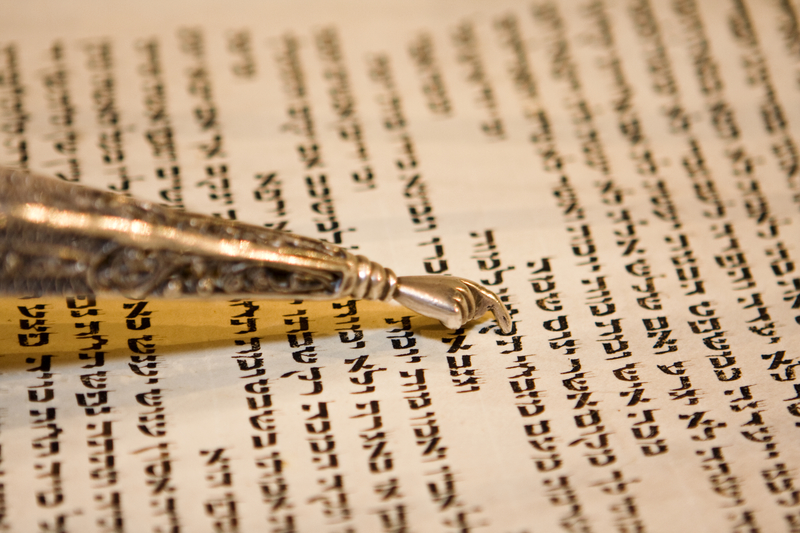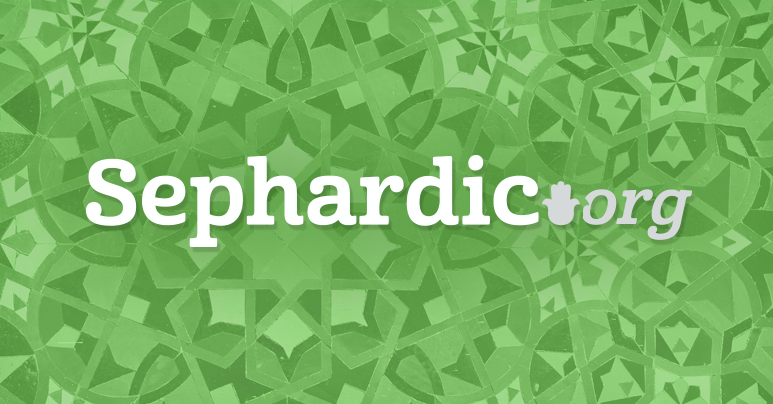
The way towards the Divine Presence is graduated. Man was restricted in his advancement towards the dwelling place of the שכינה - according to his respective division within Israel and according to his personal level of purity. Even Moshe - the greatest amongst men, was restricted. As the verse testifies 40:35 “Moshe could not enter the אהל מועד - because the cloud had settled upon it and the כבוד ה׳ - the Divine Presence filled the Mishkan.” The opening verse of our parasha pairs the word משכן - R. Bahya cites a Midrash that this indicates that the Sanctuary on earth has a parallel one in the celestial regions.
The Talmud (Zevahim 116) apparently asserts that the Torah’s laws which were stated in terms of the משכן such as the delineation of the מחנות - camps (in terms of their graduated sanctified access) -apply equally and correspond (somewhat) to the areas of the מקדש בירושלים - The Mishna (Kelim 1:8) lists the various spiritual levels of holiness beginning with that of the land of Israel. This writes R. Natan Shapira (17th century) in his טוב הארץ corresponds to the lowest part of the world of יצירה - With an ascent towards the קדש קדשים corresponding to the head of בריאה - The walls, fences and levitical guards that were placed at various places in and around the Temple Mount were indicative of the spiritual protection required to guard against any unauthorized entry into their parallel celestial arena.
The Mishna teaches that גוים were forbidden to traverse past the סורג and חיל into the עזרת נשים - R. Natan explains that an unauthorized entry by a גוי would allow free passage into the holy of any and all negative forces attached to this illegal. With this in mind we hope to form a clear picture of what preempted the breaking of the walls of Jerusalem at the close of the first temple era and what the impetus was of the יונים gaining an ability to breach the fence - סורג in thirteen places on the Temple Mount during the second temple era.
In order to understand these events properly we must focus on the fact that a physical breach can only take place after a spiritual one. We will see that it is only after the spiritual channel known as דעת becomes compromised that a breach or an intermingling of the unholy into the holy becomes possible.
Daat and Keeping the Seperation Between Holy and Unholy
The Talmud (Berakhot 33) describes the lofty spiritual channel called דעת - as it is placed between two forces of stern judgement and kindness depicted by two respective Divine names of א״ל and יהו״ה - as in א״ל דעות ה׳ - Similarly it describes the מקדש - as it too is placed between two divine names of kindness and justice - As in the verse describing the Temple - בהר נחלתך מכון לשבתך פעלת יהו״ה מקדש אדנ״י - .. on the mount of your inheritance - the foundation of your place of dwelling ... Hence R. Eleazar concludes that one who retains this divine channel of דעת it is as if the בית המקדש was built in his days as the existence of both is dependent upon their ability to sit between these two divine attributes.
The Sages teach that it is in the blessing of חונן הדעת that we make הבדלה which represents our recognition that there is a difference between light and darkness and Israel and the nations. If דעת is compromised - the recognition between holy and unholy is no longer discernible. We see from the Sages ruling regarding the insertion of הבדלה into the blessing of דעת that this channel does not only delineate amongst the opposing holy attributes of חסד and דין but also between that of the Holy and the unholy.
Daat is a central column force that balances חסד and דין - it extends its influence down to the lower central attribute of יסוד -This consists of the appropriate amount of Hasidim and Gevurot to use and dispense. Finally we will recall its relationship with the highest of the central column channels called כתר - which represents the פנימיות of the force while דעת represents that in its external or חיצוניות form.
The Breach in Yesod
The Mishna (Middot 2:3) informs us that during בית שני the יונים breached the סורג - a ten טפח structure protecting entry into the next level of sanctity. R. Natan tells us that this fence was סורג - literally woven from Hasadim and Gevurot from Daat to protect the יסוד - The numerical value of 454 of its expanded form סמך ואו ריש גמל - expresses its spiritual purpose of חומת also 454 - acting as the celestial fence - separating Israel and the nations.
This holy level of Yesod is associated with יוסף numerically 156 - It is no coincidence that our Sages teach that the breach came thru his counter forces אנטיוכס - 156 or מלך יון - 156 - leading the גוים to gain access to the courtyards and ultimately defiling the oil or the power station of the היכל - At the close of בית ראשון - Jerusalem also experienced a breach in its walls - which we commemorate in the fast of the seventeenth of Tammuz - which of course led to the burning of the מקדש three weeks later. A breach corresponds to the entrance of the unholy into the holy.
It can only have occurred when the דעת of the nation became compromised. Namely - when דעת was not surrounded by the two holy attributes or divine names as we learned יהו״ה מקדש אדנ״י -This of course led to the mingling of light with darkness - Let us continue to delve into a possible reason for this blemish in the Daat of the nation.
What Preempted the Breach
It always baffled me as to why they (Zekharya 8:19) instituted a separate fast to commemorate the siege around the walls of Jerusalem on עשרה בטבת - What does it represent spiritually that would require us to fast? R. Moshe Antebi (reflections of R. Moshe Shapiro - Chanukah chap 14-17) makes the observation that the siege is integrally related to both the end of prophecy and the translation of the Torah into Greek. I would advance that all three events - occurring at various times of the temple eras reflect a weakening of the Daat of the nation.
These events represent the precursor for breaches in the spiritual walls of the temple. The result of course is the absence of הבדלה - light intermingled with darkness - Israel with the nations. The Talmud in the minor Masekhet Sofrim 1:7 teaches “Once five scholars translated the Torah into Greek for King Ptolemy and the day was difficult for Israel like the day the golden calf was made. (See Meg 9 which has 72 scholars)”. The Elders of Hillel and Shammai authored a scroll of the misfortunes of Israel. They relate the above noted three events in Megilat Taanit (20a) - The Greek translation brought three days of darkness into the world beginning with the 8th of Tevet.
These were instituted as fast days - the 9th also associated with the death of Ezra and the 10th with the Babylonian siege of Jerusalem. Though these events occurred centuries apart - the Sages consciously attribute them all as days of darkness. I would suggest that these three events stand to summarize the compromise of the Daat of the nation - leading to the ultimate breaches we mentioned earlier. The death of Ezra HaSofer coincides with the elevation of the Greek empire and the end of prophecy.
The Talmud (Meg 15) concludes that he is synonymous with מלאכי - the last of the prophets. His death and resulting end of the prophetic era coincided (Shabbat 88 - Seder Olam Perek 30) with the global reign of Alexander the Great. Admittedly we know that the Talmud (Meg 8-9) permitted the Torah to be written in Greek - this did not preclude our Sages to lament over the translation and the rise of Greek global dominance and their cultural influence over Israel. R. Antebi notes that the Sages (BR 2:4) describe their empire in terms of darkness.
Greek is more than a language - it is synonymous with their wisdom (Sotah 49) and culture. It does appear - that the translation illuminated the Torah in another light - but it was a false light. Profound darkness portrays itself as an illusion of light. We can better portray the spiritual event of עשרה בטבת - We know that Jerusalem in general and the מקדש in particular extended life and light to the world. A fast day is called when the light of the world (BB 4) is surrounded by forces of darkness - The city and its temple no longer shine. Tevet is described in terms of its longest and dark nights (Rashi Shemot 27:21).
It is befitting that it coincides with the end of prophecy. A world with prophecy and one without are totally different. The Greeks cannot live under the same roof as prophecy - their rise to power drove it away.
The Tikun of Daat
R. Natan details the spiritual parallel of the women’s courtyard whose measurements were 135 amot square - as expressing the balancing force of Daat. I will just give a hint of the wondrous ideas he shares. The Hasidim and Gevurot are in essence 5 each as is known and are expressed in the numerical value of יהו״ה - Hence the measurement of דעת is 135 x 135 - This is in the secret דעת נשים קלה - Or the דעת of the women’s courtyard is קלה 135.
The Sages knew it was essential to bring back light into the courtyards - and to remove darkness caused by the breaches of the יונים - The success was initiated via the self sacrifice of the Hashmonaim. However - דעת would need to be reinforced at its core to protect it from once again being accessed by גוים - We know that the Greeks breached the סורג in 13 places while the מכבים who drove them out numbered the same.
The only way to reestablish the דעת of the nation is to arouse its internal force called כתר - we know that this comes about via the lights of the 13 Middot. This is the secret (See Tuv HaAres) behind the תקנה of our Sages requiring those who enter the מקדש to bow in 13 specific places in the temple courtyard paralleling the breaches of the יונים - We must rebuild the central column from its bottom or יסוד - Reweaving in a proper balance the divine attributes.
We must not confuse the false light of Greek wisdom with the true light of Torah. We can then continue and arouse the 13 emendations of the holy beard - this comes about via our imitation of them - as he is merciful so are we to be. This will help us ascend all the way up to כתר - In this way we can reintroduce the light back into the world - and all the nations will be drawn to it - as described by Yishaya in 2:2 concerning the third temple ונהרו אליו כל הגוים -







